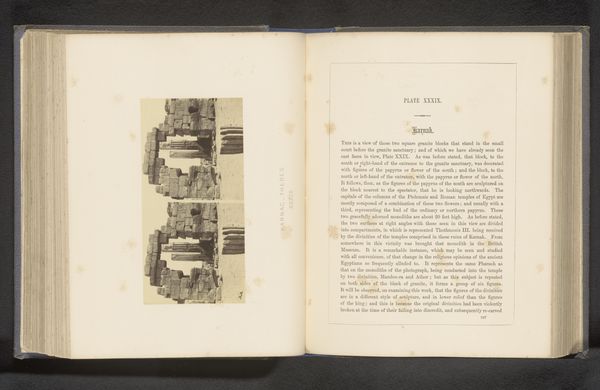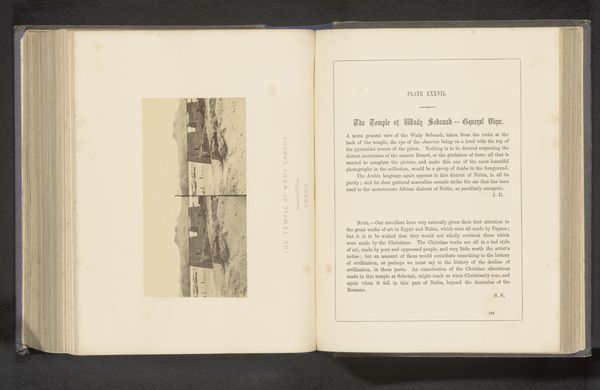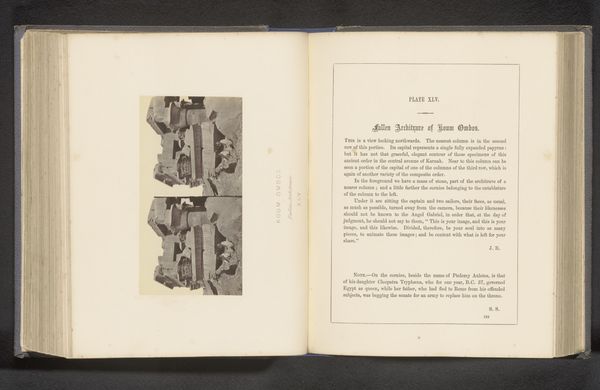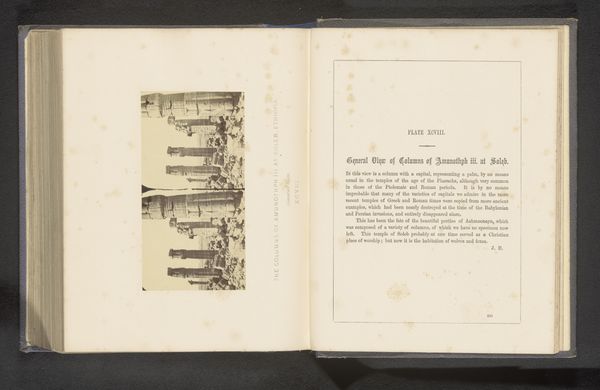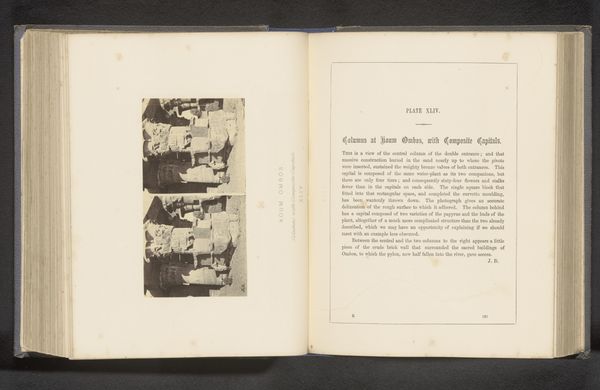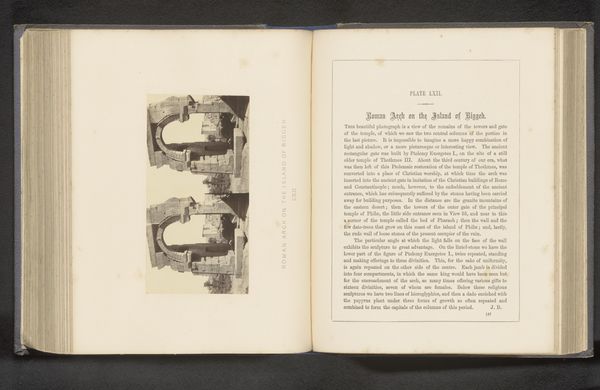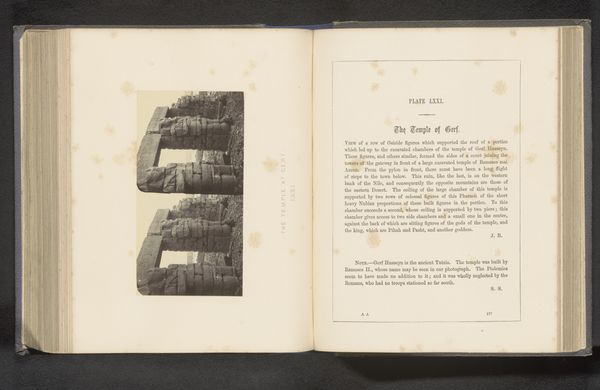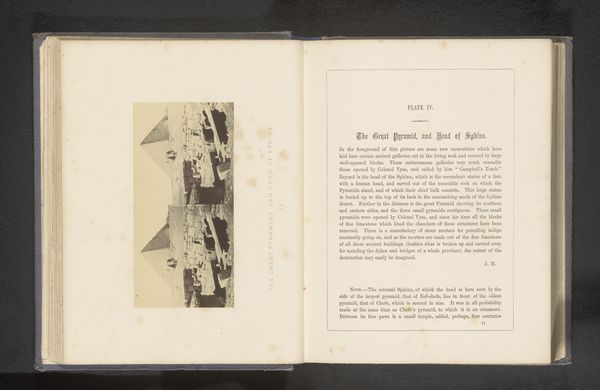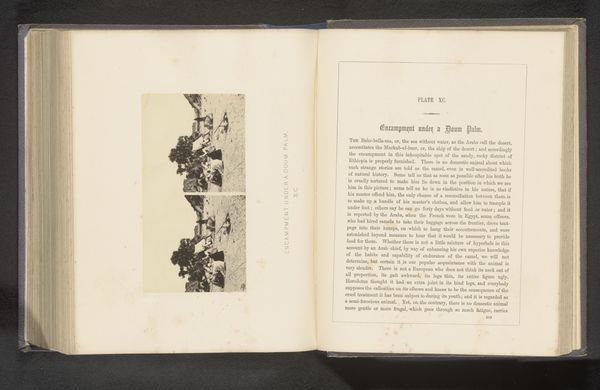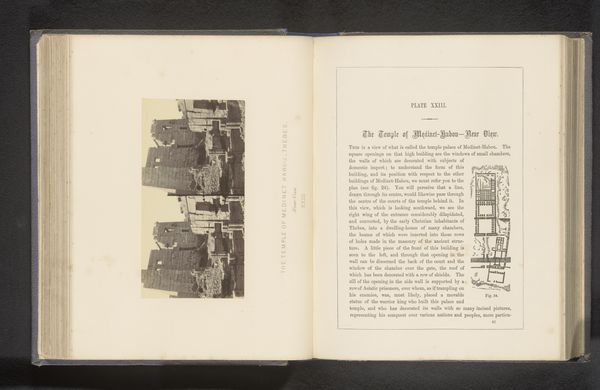
print, photography, gelatin-silver-print, albumen-print
# print
#
landscape
#
ancient-egyptian-art
#
photography
#
column
#
gelatin-silver-print
#
albumen-print
Dimensions: height 74 mm, width 144 mm
Copyright: Rijks Museum: Open Domain
Curator: So, tell me, what do you make of Francis Frith’s “Ruins of a Temple at Bigeh,” taken sometime before 1862? The print certainly has an arresting quality. Editor: It does! It’s presented in a book spread, pairing the photograph with a page of text. There’s something very stark about the ruins, almost… archaeological. What do you see in it? Curator: Well, I see the hand of colonialism, quite frankly. Here we have a gelatin-silver print, mass-produced to satisfy European desires for exotic landscapes and artifacts. The very act of photographing these ruins is an act of claiming ownership, wouldn’t you say? Consider the labor involved: Frith and his team, the transportation of equipment, the exploitation of local resources to develop the images. Editor: That's a really interesting point I hadn't considered! I was thinking more about the… craft? The technical aspects of capturing such a detailed image in that era. Curator: And that’s important, too! The albumen process, the paper quality – all contribute to the image’s intended impact. But how did that materiality then circulate and solidify power structures? Were these prints primarily for the elite? How was the process of photographic production tied into colonial extraction? Editor: So you are saying that it is more than just pretty scenery; this image is deeply entwined with the economic and political forces of the time? Curator: Precisely! We can’t ignore the role of photography in shaping perceptions and reinforcing colonial narratives. Thinking about Frith's intention, what kind of viewer did he anticipate for these images, and what impact was he aiming for? Editor: I hadn’t considered it in this light at all. It gives me a lot to think about regarding the impact of materiality. Curator: Indeed. By examining the physical production and consumption of such works, we expose the often-invisible web of labor and capital that underpinned Victorian-era artistic and scientific endeavors. It shows how far the influence of those endeavors spread.
Comments
No comments
Be the first to comment and join the conversation on the ultimate creative platform.
